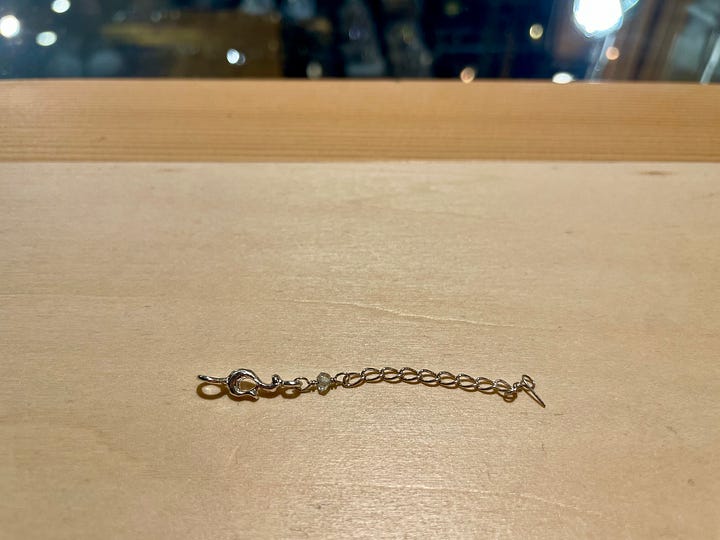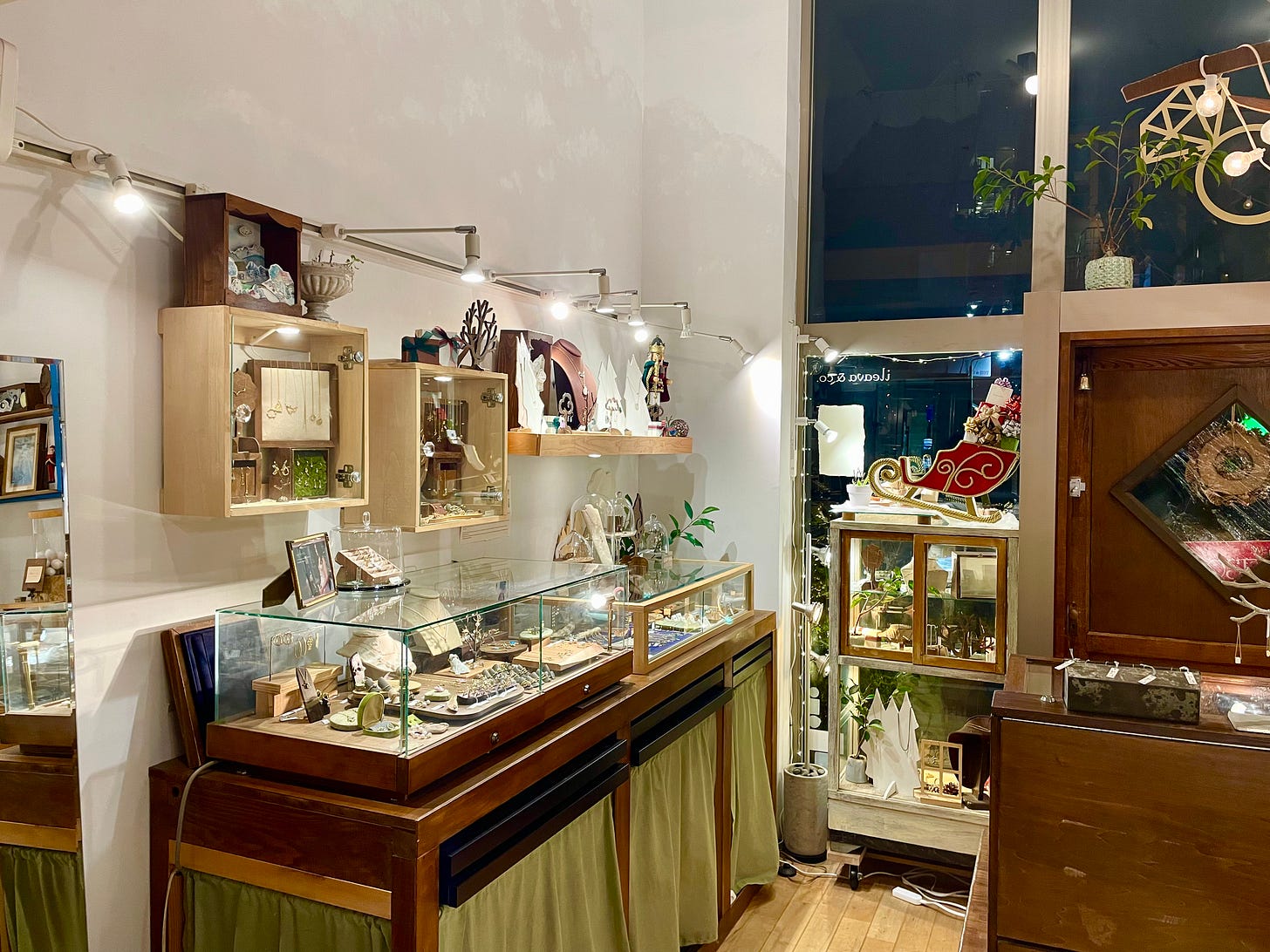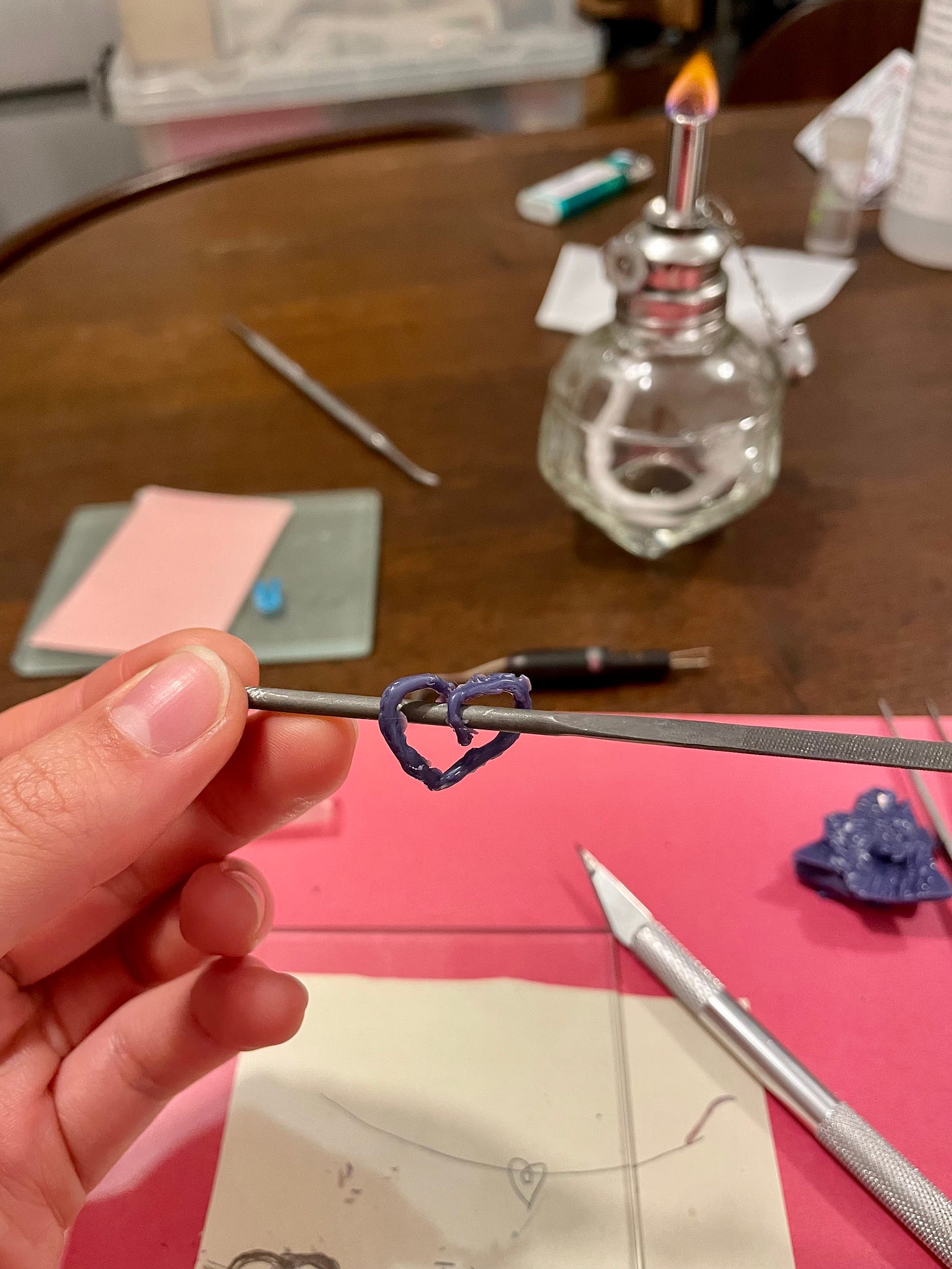Many men never step foot in a jewelry store until they are ready to propose.
While furiously twisting a worn shred of paper, an American man asked to see some rings. Or rather, he entered the shop, stood a little awkwardly, then when prompted revealed that he planned to propose to his girlfriend on Sunday.
He already had an engagement ring in America, but during his trip he decided to propose in Japan. He needed an additional ring to use during the proposal.
Sweetly, he had extensively researched our store’s online shop and knew what his girlfriend would like: a gold size 5 ring in an organic and simple design.
The man examined a few ring options between trembling fingers before making a selection.
I share this anecdote from my past week at the studio because it encapsulates so many emotions around jewelry: excitement and trepidation for the future it represents, confidence in choosing something for someone you love, and nervousness navigating an unfamiliar environment.
Clasping tightly
On the hands-on side of my apprenticeship, I spent a few more hours literally building on my work from last week with the silver clasps.


My fingers struggled to steady when working with such tiny beads and tools. Who knew wielding pliers could be so tricky?? Luckily fine metal is recyclable, so any mistakes with silver wire were saved to later melt down.
Slowly I improved and got more reliable results with the clasps.
I attached chains to the clasps and even helped my mentor assemble the final stages of a silver pendant necklace she made. Working on each piece in isolation and then connecting them together helped me understand the construction.
I find myself at home examining my own jewelry to dissect how it was made. So interesting to realize that jewelry can be broken down into components - and it’s possible to make them myself!
Twisted
I continued my attempt from last week at a wax model for a necklace pendant. My friend is getting married and I want to gift her a gold necklace.
The wax remains a crude approximation of the idea I have in my head, but at least I successfully made the loop of the heart three-dimensional.
I ordered my own set of tools and wax building basics so that I can practice more at home. I am impatiently waiting for the package to arrive!
Culture and the perception of luxury
All of the pieces are handmade at the shop where I apprentice. The main reason why I wanted to learn from their team is because they design and craft their pieces in-house. I also purchased from them before because I like my personal jewelry collection to be unique. I highly value bespoke or custom objects.
However, the perception of luxury varies across cultures.
Maya, my mentor, shared that when she first started her business in Japan she had to educate consumers that handcrafted items from a small brand can be premium. Japan has a strong crafting culture, but it favors home-based activities creating items seen as trinkets.
Japanese culture emphasizes collectivism, which reflects in the consumer preference for widely-recognized brands and designers. Cartier, Mikimoto, TASAKI, and Harry Winston capture the imaginations of many Japanese consumers like they do in the rest of the world, but without sharing much room with boutique designers.
On the other end of the spectrum, the United States - where I grew up - is an individualistic society. Bespoke items tend to have additional value ascribed to them. Boutique brands often have a “cool” factor for being under-the-radar. The fact that a jewelry piece is handmade and one-of-a-kind generally makes it more premium.
There’s a lot more nuance here particularly around perceived luxury, culture, and brand trust that I want to untangle in a future write-up. Much of the perception of luxury products is subjective and culture is one factor behind subjectivity.
For now, my main takeaway is that communicating the value of fine jewelry within a market’s cultural context is just as important as creating it.




